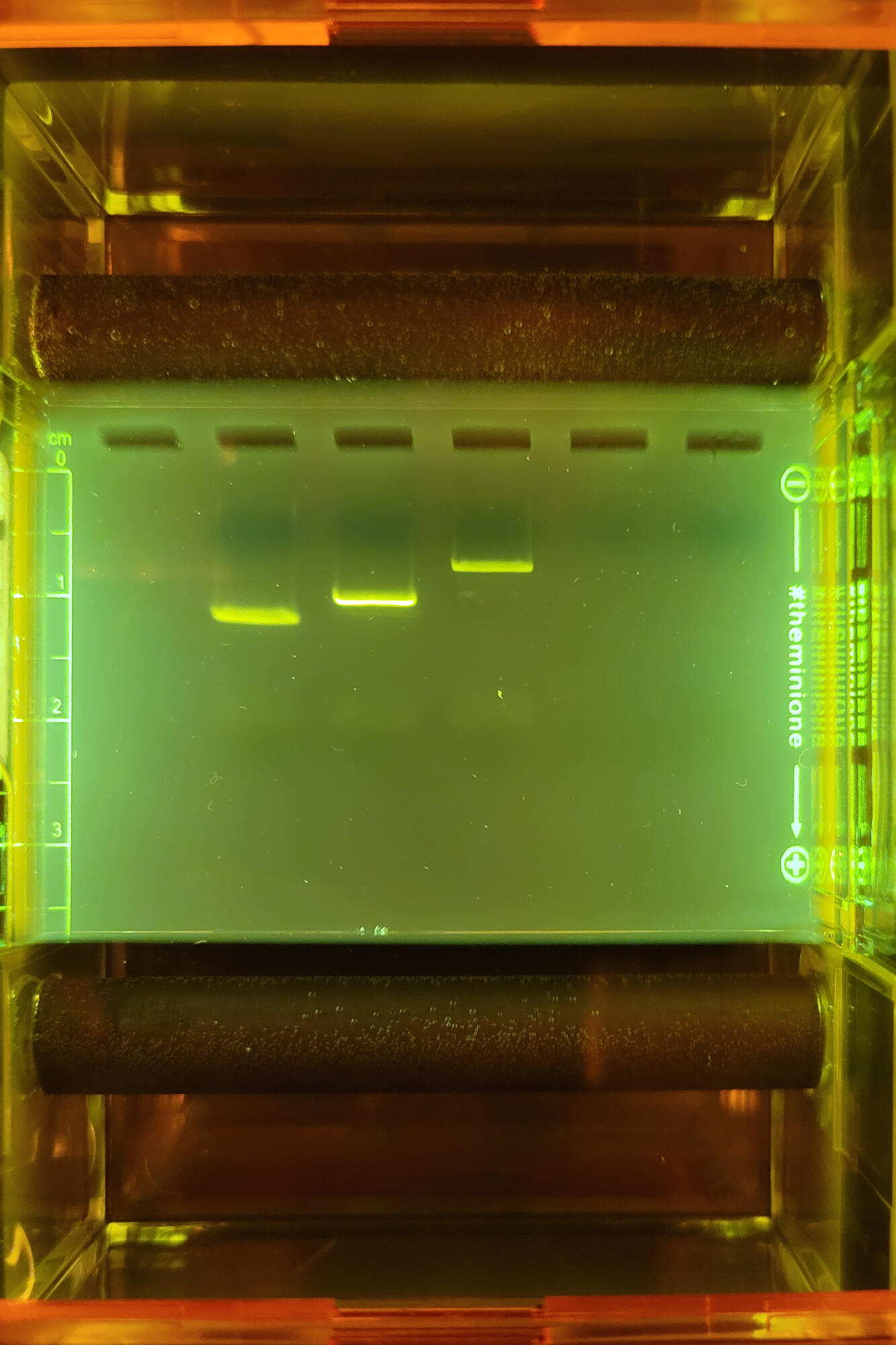
Investigators have collected a DNA sample from a (fictitious) crime scene and have sent it to the forensics lab to be analyzed.
Grade 12 students in AP Biology use state-of-the-art technology to conduct the DNA fingerprinting process to help investigators solve the crime. Assisted by gel electrophoresis systems, the students will match the DNA from the crime scene against DNA taken from multiple suspects, and will determine who was at the scene of the crime.
“They’re taking their knowledge base from their biotechnology unit – DNA replication, DNA sequencing, and the genome – and applying it using lab skills to come up with an answer to the question, ‘Who did it?’,” says AP Biology teacher Susanne Walker Curry. “They’re using the theory they’ve learned, but then also conducting the practical component using the technology, which is vital.” (Want to learn more about gel electrophoresis and see the lab in action? Watch this great video that breaks it all down.)
Earlier this school year, the Senior School science department purchased these new gel electrophoresis machines; enough for a full class of students working in pairs to each get hands-on lab experience at the same time.
Supporting STEAM and Cross-Curricular Learning
As identified in Floreat, our strategic plan, we are prioritizing STEAM (science, technology, engineering, art and math) programming because we recognize its value in preparing students for the future. And with the recent release of our Campus Master Plan, we have also committed to a Science Centre STEAM Expansion to provide students with dedicated STEAM facilities.
Benson Young, Head of Science and a chemistry teacher, says technological advancements in all branches of science continually allow our students to learn and do more year-over-year. With the gel electrophoresis lab, for example, the school previously had just one machine for an AP Biology class to share or that students would observe the teacher using.
“We now have technology working with us to allow students to collect more numerical, quantitative data, as well as the qualitative data they’ve always been able to collect using their senses,” he says. “We place a huge emphasis on practical skills here; we want to make sure that when students leave in Grade 12 they have the necessary lab skills, post-lab analysis skills and critical thinking skills. Technology enhances and hones those skills. It allows students to really understand better because now they can see both the quality and quantity of data much better.”
He says that the school’s investments in technology and facility upgrades in recent years will help inform decisions related to moving ahead on Floreat and the Campus Master Plan. The upgraded physics classroom, replete with new technology that prioritizes active learning and collaboration, is a prime example of the constant evolution in learning and where we are going.
Benson also says that a focus on STEAM and cross-curricular learning – lessons that are not exclusive to one subject area – is allowing our faculty to explore new technologies and opportunities that, in turn, provides students innovative experiences.
He highlights a project Grade 9 students are working on this year, where they design and build a device that automatically waters a plant whenever it measures that the soil is too dry, that touches on each of the five STEAM fields.

Skills for Life
Back in AP Biology, the student forensic scientists have successfully used micropipettes to carefully transfer the crime scene DNA and suspects’ DNA to the gel electrophoresis systems. With the machines powered on, the students excitedly watch as visible DNA strands move through the gel and reveal which suspect committed the fictitious crime.
“Excitement is a pretty standard reaction with this lab. As a teacher, it’s heartwarming when you see that reaction from students; it really tells you that what we just did was pretty awesome and it’s made an impact on their learning,” Susanne says.
Benson says getting students excited about learning is not only important in helping students retain information and skills, it’s also key in helping students discover passions and possible post-secondary paths.
“It comes back to being able to provide them with enhanced experiences, and that starts with having access to these resources and having an administration that’s extremely supportive of innovation,” he says. He also credits the faculty at the school who are lifelong learners, striving to stay at the top of their game in order to improve their teaching to the benefit of students.
Adds Susanne: “Learning has changed so much since I began teaching. It’s moved from the ability to learn from a textbook and 2D diagrams to now being able to take their knowledge and apply it to solve problems.”
“What we’re doing with the equipment and technology we now have in the science department is giving them the opportunity to build skills beyond the text. What they’re doing is looking at data and having to predict, analyze it, and justify what’s happening. By doing that, we’re also building their confidence, curiosity and creative thinking, which will serve them for life.”


